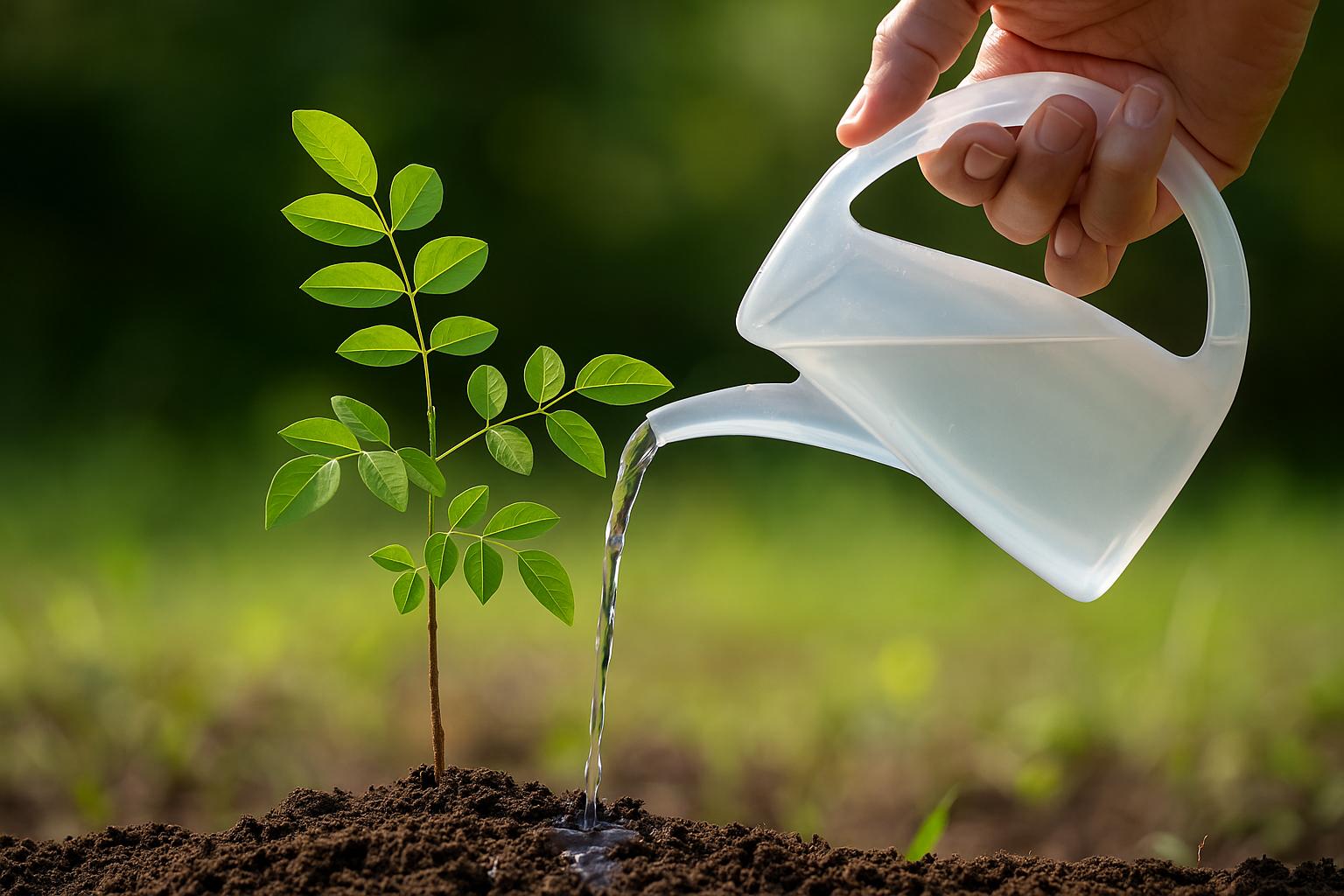Shisham, also known as Dalbergia sissoo or Indian rosewood, is one of the most highly valued timber trees across South Asia. Known for its durable hardwood, it also supports agroforestry, soil stabilization, and biodiversity conservation. Cultivating Shisham from seeds ensures genetic diversity and long-term sustainability, making it a rewarding investment for farmers and land managers.
This guide explores every step of seed propagation, soil requirements, care routines, and management practices so farmers can establish healthy Shisham plantations with confidence.
Why Should Farmers Grow Shisham from Seeds?
Shisham’s inherent diversity is preserved when it is grown from seeds. Seedlings are more able to withstand pests and adjust to local conditions than cuttings or clones. Additionally, it is the most cost-effective method of establishing sizable plantations.
Shisham trees provide multiple benefits:
- Their wood is used in furniture, flooring, and carving due to its strength.
- The trees improve soil fertility by fixing nitrogen through root nodules.
In agroforestry, Shisham integrates well with crops such as maize, wheat, and mustard, providing shade and offering long-term timber returns.
Where Can You Source Quality Shisham Seeds?
Plantation success is determined by seed quality. The greatest results are obtained from pods that have just been harvested from mature, healthy trees. It is best to gather pods during the dry season and keep them in a cold, dry place.
Commercial vendors provide verified and tested seed lots for farmers establishing huge plants. Examine viability tests, germination rates, and the legitimacy of the species when choosing a supplier. To guarantee consistent results, farmers wishing to start nurseries can also purchase Shisham tree seeds directly from reputable suppliers.
Using subpar seeds frequently results in uneven growth, weak seedlings, and patchy germination. Tested seed lots with germination rates more than 70% should be given priority by farmers.
How to Prepare Shisham Seeds for Germination
The hard outer layer of shisham seeds prevents them from germinating. Pretreatment greatly increases the rate of sprouting. The most popular technique involves soaking seeds in water for a full day prior to planting. This permits moisture penetration and softens the coat.
Some farmers use scarification, which involves rubbing seeds lightly with sandpaper or soaking them in hot water (approximately 60°C) for ten minutes, then cooling them, to speed up germination.
By reducing the germination time from three weeks to roughly ten to fourteen days, seed pre-treatment ensures quicker establishment of seedlings.
What Soil and Climate Do Shisham Trees Prefer?
Tropical and subtropical conditions are ideal for shisham growth. It thrives in regions with 800–1500 mm of yearly rainfall. The optimal temperature range is between 20°C and 35°C.
Although it can withstand sandy or gravelly soils, the tree favors well-drained loamy soils. Steer clear of salty or wet soils since these might lead to root infections. On riverbanks, where soil fertility and drainage are still high, shisham thrives.
Indian forestry research indicates that Shisham plantations built on alluvial soils produced up to 40% more timber than those on clay-heavy soils.
How to Sow Shisham Seeds in a Nursery
Strong seedlings for transplantation are ensured by nursery preparation. It is recommended to plant seeds in raised beds or polybags that are filled with an equal amount of soil, sand, and compost.
Plant seeds 1 to 2 cm deep. Daily mild irrigation is necessary to keep the soil damp but not soggy. Typically, seedlings emerge in two weeks.
To promote robust growth, give seedlings moderate shade for the first month before progressively exposing them to full sunlight. After four to five months, when they are around thirty centimeters tall, seedlings are prepared for transplantation.
When Is the Right Season to Plant Shisham in the Field?
Shisham seedlings are ideally transplanted at the start of the monsoon season. This promotes rapid root establishment and steady rainfall.
Dig a field pit that is 45 cm deep and 45 cm broad, then fill it with a compost and topsoil mixture. Timber plantations typically have a 3 × 3 m spacing, whereas agroforestry systems prefer a wider 5 × 5 m spacing.
When planted in the proper season, survival rates are over 85%; however, when planted during dry months, they are just 50%.
What Are the Watering and Care Requirements?
During dry conditions, young Shisham seedlings require frequent watering. But once planted, trees can withstand drought. Avoid overwatering since it promotes root infections.
Mulching with leaves or straw reduces weed growth and preserves moisture. Shisham seedlings are susceptible to competition throughout their first year; therefore, early weeding is crucial for their survival.
Straight bole development, which is crucial for timber value, is encouraged by pruning lower branches in the second and third years.
“Forests are not a resource for us; they are the foundation of our life support system.”
What Pests and Diseases Affect Shisham?
Pests such as stem borers, leaf webbers, and defoliators can harm shisham. Neem oil sprays and pheromone traps are examples of biological control techniques that lessen damage without endangering the ecosystem.
Shisham dieback, caused by fungi such as Fusarium and Ganoderma, is the most severe disease. It causes trees to wilt, turn yellow, and eventually die. Using resistant seed sources, managing soil health, and ensuring adequate drainage all aid in disease control.
How Long Does It Take for Shisham to Mature?
Under ideal circumstances, shisham trees reach harvestable size in 15 to 20 years. At this point, the average girth is between 60 and 80 cm. Depending on the quality and spacing of the site, the timber yield per hectare can range from 40 to 60 cubic metres.
Before trees mature, agroforestry farmers benefit from interim crops, such as grains and pulses. While trees are being established, intercropping increases short-term revenue.
Shisham is a long-term investment since plantings can yield sustainable timber harvests for decades with the right management.
What Are the Economic Benefits of Growing Shisham?
The timber of Shisham commands high prices in the market, often fetching $700–$1,000 per cubic meter depending on quality. Its demand in furniture, flooring, and handicrafts remains strong.
Leaves serve as fodder for livestock, while roots enrich the soil through nitrogen fixation. Farmers integrating Shisham into agroforestry systems benefit from timber sales, reduced soil erosion, and diversified farm income.
According to the Food and Agriculture Organization, agroforestry with species like Shisham improves farm resilience and increases land productivity by 20 to 30 percent.
What Are the Long-Term Management Practices?
After 6 to 8 years, growers should use selective thinning to increase production. As a result, there is less competition and healthier tree development.
Continue cutting lower branches, apply organic manure once a year, and maintain appropriate spacing. Use fencing to keep grazing animals away from young plantations.
Long-term ecological equilibrium and ongoing regeneration are guaranteed by sustainable harvesting.
FAQs About Growing Shisham from Seeds
- How do I know if my Shisham seeds are viable?
Float seeds in water before sowing. Viable seeds usually sink, while non-viable ones float. - Can Shisham be grown in arid areas?
It tolerates dry conditions once established but requires initial irrigation support in arid zones. - Is Shisham suitable for small farmers?
Yes, especially in agroforestry. It provides long-term timber income while allowing intercropping. - What is the survival rate of Shisham seedlings?
With proper care, survival rates can exceed 80 percent, especially when transplanted at the right season. - Can Shisham improve soil fertility?
Yes, as a leguminous tree, it fixes nitrogen, which enhances soil fertility over time.
Where Do Farmers Go from Here?
Restoring degraded soils, creating sustainable farms, and ensuring long-term profits are all goals of growing Shisham from seeds. Once established, these trees serve as vital assets and biodiversity anchors for future generations.
When deciding what to do next, think about establishing a seedling nursery, outlining intercropping plans, and making prior plans for pest control. Shisham plantations have the potential to be both financially successful and environmentally beneficial with time and attention.
Checkout more: What’s the Secret to Cleaner Cuts with Bypass Loppers?



